BMW X1 vs Renault Symbioz – Performance, range & efficiency compared
Both models have their strengths – but which one suits you more?
Compare performance, efficiency, price and space directly: BMW X1 or Renault Symbioz?
Costs and Efficiency:
Price and efficiency are often the first things buyers look at. Here it becomes clear which model has the long-term edge – whether at the pump, the plug, or in purchase price.
Renault Symbioz has a clearly advantage in terms of price – it starts at 24400 £, while the BMW X1 costs 38200 £. That’s a price difference of around 13800 £.
Fuel consumption also shows a difference: BMW X1 manages with 0.80 L and is therefore decisively more efficient than the Renault Symbioz with 4.50 L. The difference is about 3.70 L per 100 km.
Engine and Performance:
Under the bonnet, it becomes clear which model is tuned for sportiness and which one takes the lead when you hit the accelerator.
When it comes to engine power, the BMW X1 has a significantly edge – offering 326 HP compared to 158 HP. That’s roughly 168 HP more horsepower.
In acceleration from 0 to 100 km/h, the BMW X1 is decisively quicker – completing the sprint in 5.40 s, while the Renault Symbioz takes 9.10 s. That’s about 3.70 s faster.
In terms of top speed, the BMW X1 performs noticeable better – reaching 250 km/h, while the Renault Symbioz tops out at 180 km/h. The difference is around 70 km/h.
There’s also a difference in torque: BMW X1 pulls decisively stronger with 477 Nm compared to 265 Nm. That’s about 212 Nm difference.
Space and Everyday Use:
Whether family car or daily driver – which one offers more room, flexibility and comfort?
Both vehicles offer seating for 5 people.
In curb weight, Renault Symbioz is minimal lighter – 1436 kg compared to 1575 kg. The difference is around 139 kg.
In terms of boot space, the Renault Symbioz offers minimal more room – 576 L compared to 540 L. That’s a difference of about 36 L.
In maximum load capacity, the Renault Symbioz performs minimal better – up to 1682 L, which is about 82 L more than the BMW X1.
When it comes to payload, BMW X1 clearly perceptible takes the win – 500 kg compared to 379 kg. That’s a difference of about 121 kg.
Who wins the race?
The BMW X1 proves to be wins the duel decisively and therefore becomes our DriveDuel Champion!
BMW X1 is the better all-rounder in this comparison.
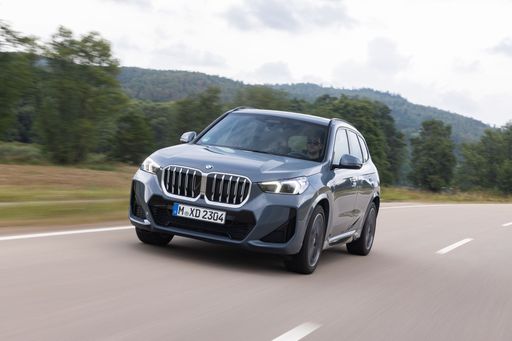
BMW X1
BMW X1
The new BMW X1 effortlessly blends sporty elegance with practical functionality, making it a standout choice in the compact SUV segment. Inside, the sophisticated cabin design is complemented by high-quality materials and cutting-edge technology, creating a welcoming and advanced driving environment. On the road, the vehicle's agile handling and responsive performance promise an engaging driving experience, whether navigating urban streets or embarking on longer journeys.
details @ press.bmwgroup.com
@ press.bmwgroup.com
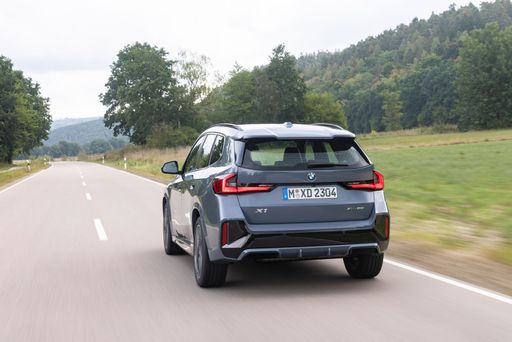 @ press.bmwgroup.com
@ press.bmwgroup.com
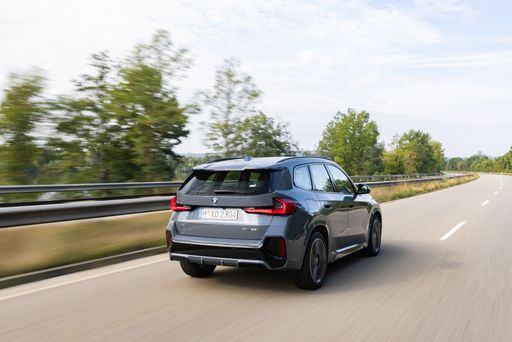 @ press.bmwgroup.com
@ press.bmwgroup.com
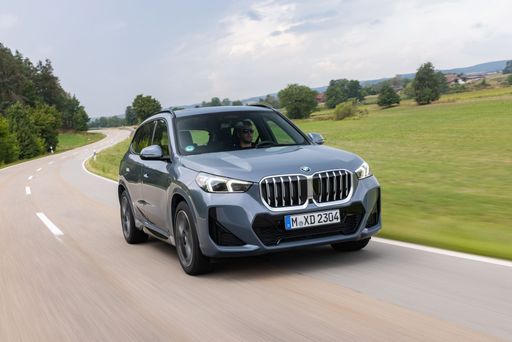 @ press.bmwgroup.com
@ press.bmwgroup.com
 @ press.bmwgroup.com
@ press.bmwgroup.com
Renault Symbioz
The Renault Symbioz is an innovative concept car that explores the future of autonomous and connected driving. Its design seamlessly integrates indoor living space features with cutting-edge automotive technology, creating a comfortable and modern environment. The Symbioz highlights Renault's vision of an eco-friendly and connected mobility experience, paving the way for the next generation of smart vehicles.
details @ media.renault.at
@ media.renault.at
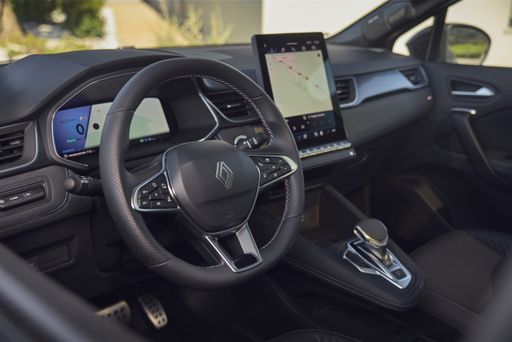 @ media.renault.at
@ media.renault.at
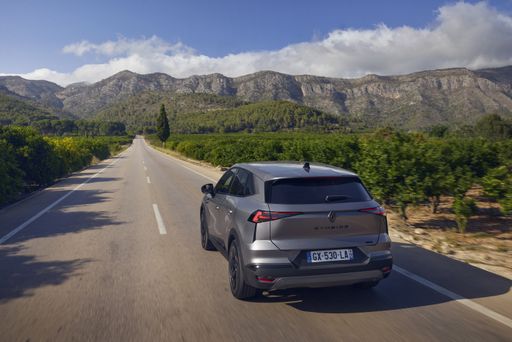 @ media.renault.at
@ media.renault.at

|

|
|
|
|
Costs and Consumption |
|
|---|---|
|
Price
38200 - 55500 £
|
Price
24400 - 30700 £
|
|
Consumption L/100km
0.8 - 7.7 L
|
Consumption L/100km
4.5 - 5.9 L
|
|
Consumption kWh/100km
-
|
Consumption kWh/100km
-
|
|
Electric Range
83 km
|
Electric Range
-
|
|
Battery Capacity
14.20 kWh
|
Battery Capacity
-
|
|
co2
17 - 175 g/km
|
co2
102 - 134 g/km
|
|
Fuel tank capacity
47 - 54 L
|
Fuel tank capacity
48 L
|
Dimensions and Body |
|
|---|---|
|
Body Type
SUV
|
Body Type
SUV
|
|
Seats
5
|
Seats
5
|
|
Doors
5
|
Doors
5
|
|
Curb weight
1575 - 1935 kg
|
Curb weight
1436 - 1544 kg
|
|
Trunk capacity
490 - 540 L
|
Trunk capacity
492 - 576 L
|
|
Length
4500 - 4505 mm
|
Length
4413 mm
|
|
Width
1845 mm
|
Width
1797 mm
|
|
Height
1622 - 1642 mm
|
Height
1575 mm
|
|
Max trunk capacity
1495 - 1600 L
|
Max trunk capacity
1582 - 1682 L
|
|
Payload
490 - 500 kg
|
Payload
376 - 379 kg
|
Engine and Performance |
|
|---|---|
|
Engine Type
Diesel MHEV, Petrol MHEV, Plugin Hybrid, Petrol, Diesel
|
Engine Type
Petrol MHEV, Full Hybrid
|
|
Transmission
Automatic
|
Transmission
Manuel, Automatic
|
|
Transmission Detail
Dual-Clutch Automatic
|
Transmission Detail
Manual Gearbox, Automatic Gearbox
|
|
Drive Type
Front-Wheel Drive, All-Wheel Drive
|
Drive Type
Front-Wheel Drive
|
|
Power HP
136 - 326 HP
|
Power HP
140 - 158 HP
|
|
Acceleration 0-100km/h
5.4 - 9.2 s
|
Acceleration 0-100km/h
9.1 - 11.2 s
|
|
Max Speed
190 - 250 km/h
|
Max Speed
180 km/h
|
|
Torque
230 - 477 Nm
|
Torque
250 - 265 Nm
|
|
Number of Cylinders
3 - 4
|
Number of Cylinders
4
|
|
Power kW
100 - 240 kW
|
Power kW
103 - 116 kW
|
|
Engine capacity
1499 - 1998 cm3
|
Engine capacity
1333 - 1789 cm3
|
General |
|
|---|---|
|
Model Year
2023 - 2025
|
Model Year
2025
|
|
CO2 Efficiency Class
D, E, B, F
|
CO2 Efficiency Class
D, C
|
|
Brand
BMW
|
Brand
Renault
|
Is the BMW X1 offered with different drivetrains?
The BMW X1 is offered with Front-Wheel Drive or All-Wheel Drive.
The prices and data displayed are estimates based on German list prices and may vary by country. This information is not legally binding.
